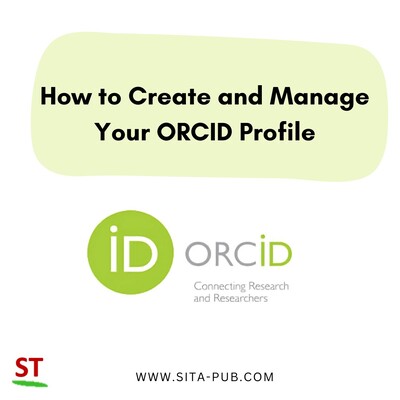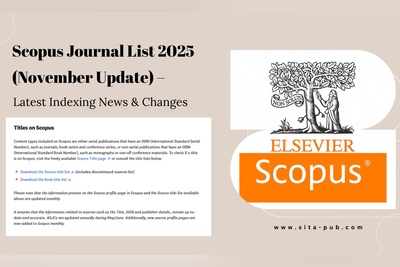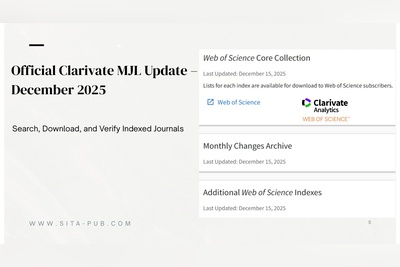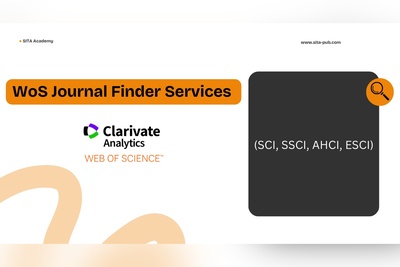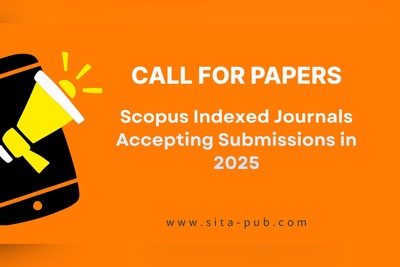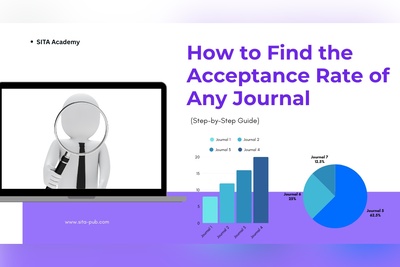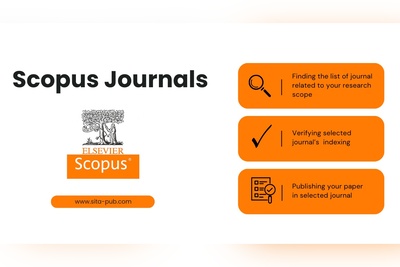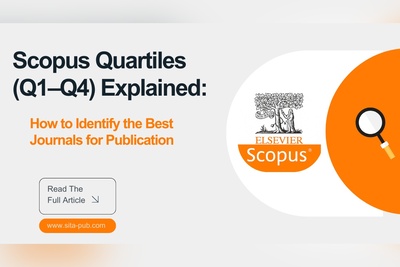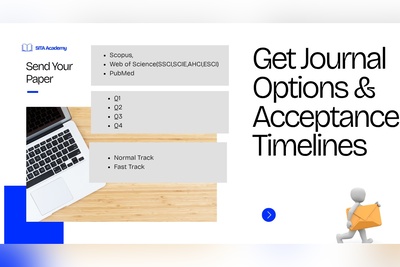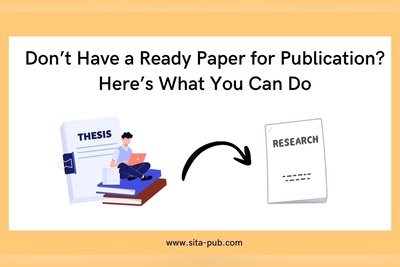5 Essential Prerequisite Forms for Journal Submission: A Complete Guide for Author
Authors submitting to scientific journals or conferences must often complete several essential forms, which can vary by publication. This article highlights the most important ones to prepare.
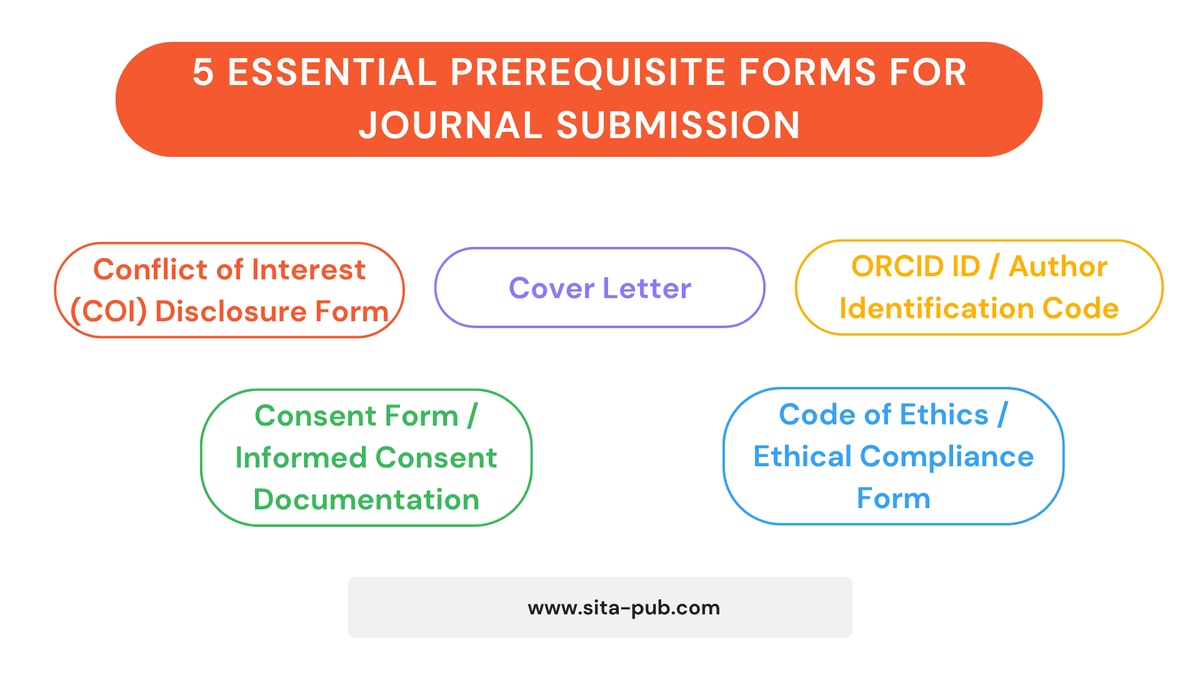
Before submitting your paper, it’s important to prepare and include a few essential documents. These typically include a Conflict of Interest disclosure, Ethics Statement, ORCID iD, Consent Form, and a Cover Letter. In the following sections, we’ll break down each of these forms, explain their purpose, and why they’re necessary for a successful submission.
Stay with us as we guide you through each one.
1. Conflict of Interest (COI) Disclosure Form
Definition and Purpose
A Conflict of Interest (COI) Disclosure Form requires authors to declare any financial, personal, or professional relationships that could bias—or appear to bias—their work. Journals use this form to maintain transparency and integrity in the research publication process.
Common Conflicts of Interest
Financial ties to companies or sponsors related to the study.
Holding stock or shares in a relevant company.
Personal relationships with individuals who may influence the review or publication.
Employment or consulting roles with related organizations.
Why It Matters
Conflicts of interest do not necessarily invalidate research, but undisclosed conflicts can damage the credibility of the study and the journal. Journals use the information to determine whether reviewers or editors should be excluded and whether a disclosure note is required in the published article.
What You Must Do
Authors should fill out the form honestly and completely. If there are no conflicts, a statement such as “The authors declare no conflicts of interest” should be included.
2. Code of Ethics / Ethical Compliance Form
Definition and Purpose
The Code of Ethics form (or sometimes called the Ethics Compliance Statement) confirms that the research has been conducted following internationally accepted ethical standards, especially when involving humans, animals, or sensitive data.
Key Ethical Considerations
Informed consent obtained from participants (for human studies).
Approval from an Institutional Review Board (IRB) or Ethics Committee.
Animal research must adhere to humane treatment standards.
Research data should not be fabricated, manipulated, or plagiarized.
Why It Matters
Journals are committed to upholding ethical research practices. Submitting this form assures the editorial team that your study complies with required ethical guidelines. Violations may result in retraction, reputational harm, or blacklisting by the journal.
What You Must Do
State the name and approval number of the Ethics Committee that reviewed your study.
Mention compliance with standards such as the Declaration of Helsinki for human research or ARRIVE guidelines for animal studies.
Confirm that data was collected responsibly and honestly.
3. ORCID ID / Author Identification Code
Definition and Purpose
An ORCID iD (Open Researcher and Contributor ID) is a unique, 16-digit digital identifier that distinguishes individual researchers. It links a researcher’s publications, grants, affiliations, and other scholarly outputs in one profile.
Why It Matters
Many journals now require ORCID iDs to:
Accurately track author contributions.
Reduce confusion between authors with similar names.
Ensure correct indexing in bibliographic databases.
How It Works
When you create an ORCID iD (at https://orcid.org), you’re given a persistent digital ID (e.g., https://orcid.org/0000-0002-1234-5678). You can then link this ID to your publications, funding sources, and institutional affiliations.
What You Must Do
Register for a free ORCID iD if you don’t have one.
Add your ORCID to the journal submission system.
Some submission systems will ask for authentication to link your ORCID with the journal’s database.
4. Consent Form / Informed Consent Documentation
Definition and Purpose
The Informed Consent Form is required when your research involves human participants. It confirms that individuals who took part in the study were informed about its purpose, risks, benefits, and their rights before agreeing to participate.
Key Elements of Informed Consent
Explanation of the research purpose and procedures.
Disclosure of potential risks and benefits.
Assurance of confidentiality and voluntary participation.
Contact information for questions or concerns.
Why It Matters
Journals take human rights seriously. Submitting a consent form confirms that you obtained voluntary, informed participation, which is legally and ethically required. Without it, your paper may be rejected or withdrawn.
What You Must Do
Include a statement in your manuscript that participants gave informed consent.
For studies involving minors, confirm that parental consent was obtained.
If your study involves interviews, photographs, or personal identifiers, ensure subjects have signed specific release forms.
5. Cover Letter
Definition and Purpose
The cover letter is a formal letter addressed to the journal’s editor that accompanies your manuscript. It serves to introduce your paper, explain its significance, and confirm its suitability for the journal.
What to Include
Manuscript title and article type (e.g., original research, review).
A brief summary of the study’s importance and key findings.
Statement of originality (e.g., “This manuscript has not been published elsewhere”).
Declaration of authorship and contribution.
Confirmation that all authors approve the submission.
Any suggested reviewers (if allowed).
Disclosure of supplementary materials (e.g., datasets or preprints).
Why It Matters
A well-crafted cover letter can increase your chances of passing editorial screening. It shows professionalism, clarity, and relevance to the journal's aims and scope.
What You Must Do
Address the letter to the Editor-in-Chief or Managing Editor.
Keep the letter to 1 page, concise and tailored to the journal.
Proofread carefully to avoid grammatical or formatting issues.
Final Tips
Before submission, check the journal’s "Instructions for Authors" page to ensure you’re using the correct templates and formats for each form. Some journals provide their own downloadable forms for Conflict of Interest, Ethics Statements, and Consent Declarations.
Also, ensure all forms:
Are signed (digitally or manually).
Match the manuscript title and authorship list.
Are submitted as separate files during the manuscript submission process, unless otherwise specified.
By properly preparing and submitting these five prerequisite forms, authors demonstrate their commitment to ethical, professional, and high-quality research publishing. Skipping or mishandling these documents can delay peer review, lead to desk rejection, or damage your academic reputation. Taking the time to complete them accurately ensures a smooth submission process and builds trust with editors, reviewers, and readers alike.
Process of Submitting an Order in SITA Academy

Share Your Research Scope |

Receive Journal List |

Select Your Journal |

Formatting & Submission |
